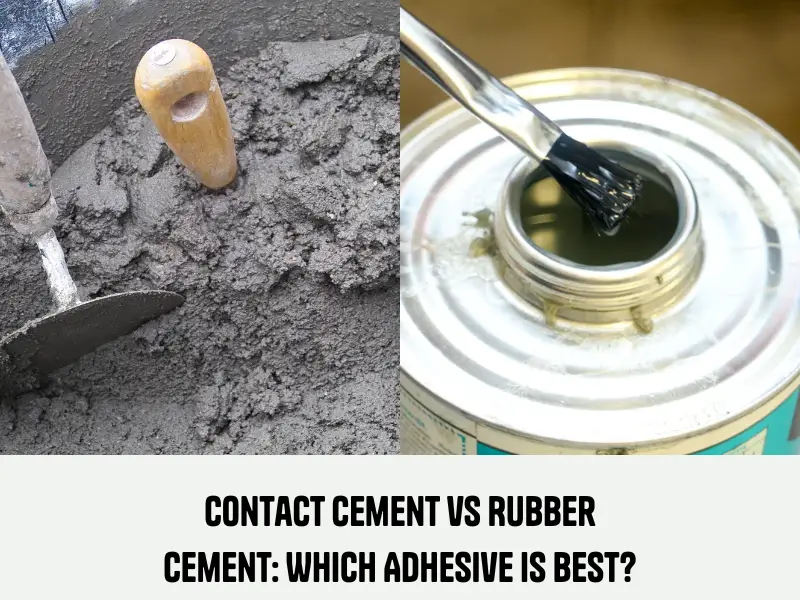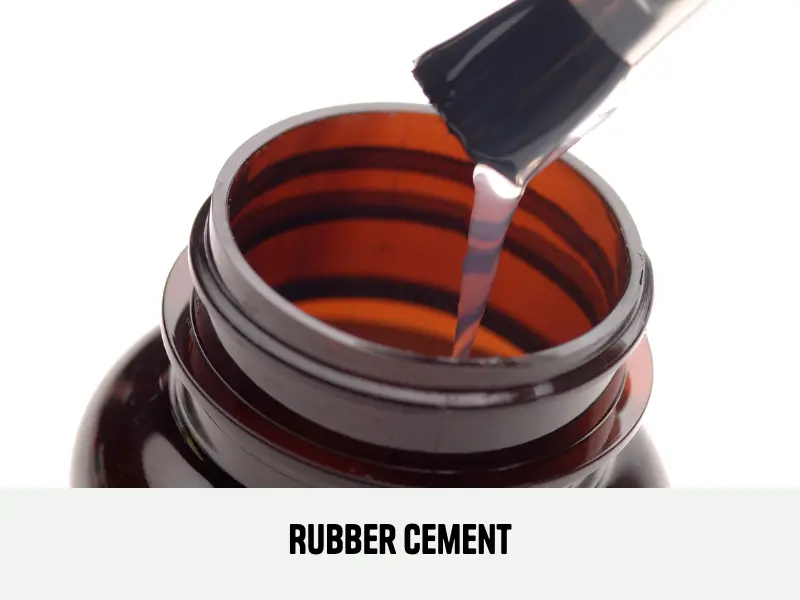When it comes to art and craft projects, finding the right adhesive is crucial. With so many options available, it can be challenging to determine which one to choose.
Two popular choices are contact cement and rubber cement. Both adhesives have their own unique properties, making them suitable for different projects.

In this article, we will discuss the differences between contact cement and rubber cement and help you choose which one is right for your project.
What is Contact Cement?
Contact cement is a type of adhesive that forms an immediate bond when two surfaces are pressed together.

It is made from solvents, resins, and other chemicals and offers a strong, permanent bond that won’t weaken over time. Contact cement is suitable for a wide range of materials, including metal, wood, plastic, and rubber.
What is Rubber Cement?
Rubber cement is composed of elastic polymers suspended in a solvent. It is a flexible, temporary adhesive that can be removed easily without leaving any residue.

Rubber cement is ideal for use with paper, cardboard, and other lightweight materials.
Contact Cement vs Rubber Cement: Differences
One of the main differences between contact cement and rubber cement is their bonding strength. Contact cement offers a strong, permanent bond that is suitable for heavy-duty projects, while rubber cement provides a weaker, temporary bond that is ideal for art and craft projects.
Another difference between the two adhesives is their application. Contact cement is applied to both surfaces that need to be bonded, allowed to dry, and then pressed together.
On the other hand, rubber cement is typically applied to only one surface and allowed to dry before the two surfaces are pressed together.
Contact Cement vs Rubber Cement – Tips for Using
Regardless of which adhesive you choose, there are some tips to keep in mind when using contact cement and rubber cement:
- Always work in a well-ventilated area to avoid inhaling fumes.
- Apply the adhesive thinly and evenly to avoid lumps and bumps.
- Allow the adhesive to dry completely before pressing the surfaces together.
- Use a roller or other tool to apply pressure evenly across the surface.
- Clean any excess adhesive immediately with a solvent or rubbing alcohol.
FAQs Regarding Contact Cement vs Rubber Cement
Contact Cement is not recommended for use on paper or cardboard because it can cause the material to warp or wrinkle.
Rubber Cement is not recommended for use on metal or plastic because it may not provide a strong enough bond.
Yes, both Contact Cement and Rubber Cement are flammable and should be used in a well-ventilated area. Avoid breathing in the fumes and keep away from open flames or sparks.
Contact Cement and Rubber Cement can be removed using solvents like acetone or mineral spirits, but the process can be difficult and may damage the bonded surfaces.
Conclusion
In summary, contact cement and rubber cement are both popular choices for art and craft projects. Contact cement offers a strong, permanent bond that is suitable for heavy-duty projects, while rubber cement provides a weaker, temporary bond that is ideal for lightweight materials.
Regardless of which adhesive you choose, always follow the manufacturer’s instructions and take precautions to ensure safety when working with adhesives.
